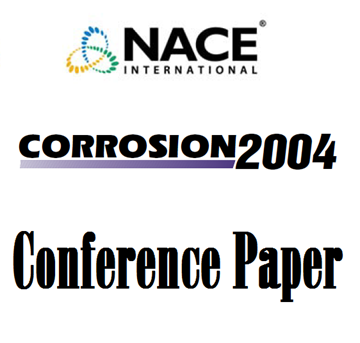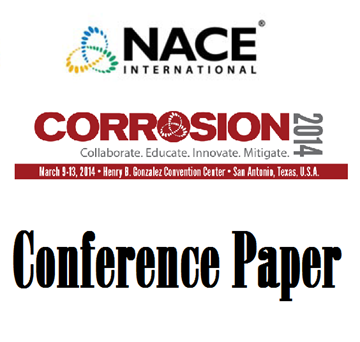Search
Products tagged with 'monitoring'
View as
Sort by
Display
per page
04758 Evaluation of an On-Line Biofilm Detector and Bio-Traps to Monitor MIC in Produced Oilfield Brine
Product Number:
51300-04758-SG
ISBN:
04758 2004 CP
Publication Date:
2004
$20.00
08036 Evaluation of Steel and TSA Coating in a Corrosion Under Insulation (CUI) Environment
Product Number:
51300-08036-SG
ISBN:
08036 2008 CP
Publication Date:
2008
$20.00
09520 Effect of Calcareous Deposit Formation on Galvanic Anode Cathodic Protection of Steel in Seawater
Product Number:
51300-09520-SG
ISBN:
09520 2009 CP
Publication Date:
2009
$20.00
29 CFR 1926.1200 - The New OSHA Standard for Construction in Confined Spaces - What’s Different from the General Industry Standard
Product Number:
41216-950-SG
Publication Date:
2016
$20.00
51314-3723-Pipeline Corrosion Management; a Compendium
Product Number:
51314-3723-SG
ISBN:
3723 2014 CP
Publication Date:
2014
$0.00
51317-9063-Continuous Monitoring Delivers Insight on Corrosion caused by Changing Sulphur Content Crudes
Product Number:
51317-9063-SG
Publication Date:
2017
$20.00
51318-10607-Inspection Monitoring and Modelling: Past Present and Future
Product Number:
51318-10607-SG
Publication Date:
2018
$20.00
51318-10629-The Development of Corrosion Monitoring Techniques for Maintenance Management in Petrochemical Plant
Product Number:
51318-10629-SG
Publication Date:
2018
$20.00
51318-10868-A Functional Test Program for Assessing Internal Corrosion Monitoring Probes’ Performance
Product Number:
51318-10868-SG
Publication Date:
2018
$20.00
51318-11196-An adapted EN technique for in situ corrosion monitoring of spent fuel aqueous storage environments
Product Number:
51318-11196-SG
Publication Date:
2018
$20.00
51318-11393-Picture for Development of Corrosion Rate Monitoring Method of Steel in Concrete, - CIPE (Current Interrupted Polarizing Extrapolation Method) -
Product Number:
51318-11393-SG
Publication Date:
2018
$20.00
AC Interference and Mitigation: Heartland Case Study
Product Number:
51317--9461-SG
ISBN:
9461 2017 CP
Publication Date:
2017
$20.00












